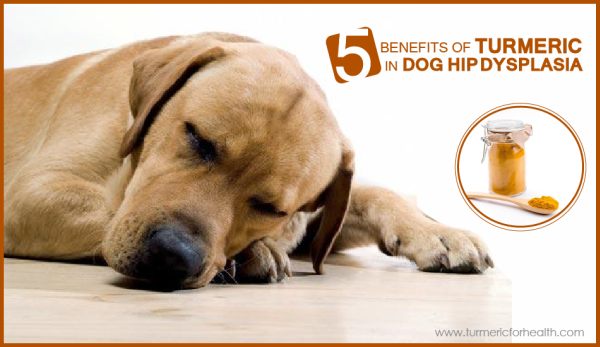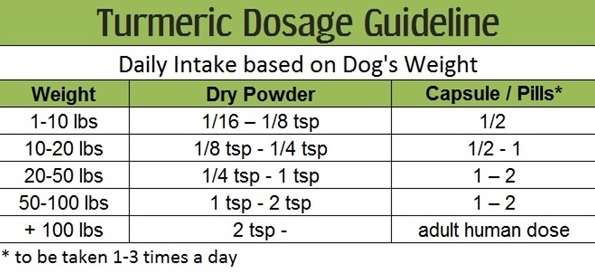Canine hip dysplasia is a common bone and joint function disorder occurring in dogs.
It accounts for about 30% of the orthopaedic (bone related) cases encountered by vets.
Hip dysplasia means abnormal formation of the hip.
This abnormal formation leads to excessive pain and friction in joints which affects gait and daily activities of your pet. It is an inherited disease and mostly larger breeds are susceptible to it.
It is common in retrievers, rottweilers, mastiffs, German Shepherd dogs, Great Danes, St. Bernards etc. It can occur in smaller breeds but the prevalence is low.
Table of Contents
What is canine hip dysplasia?

Dogs who are genetically predisposed to canine hip dysplasia are born normal.
So despite genetic predisposition, it is quite possible that environmental factors that contribute to the development of hip dysplasia.
Normally the hip joins to the thigh bone via a ball-socket joint. The ball shape end of the thigh bone fits snugly into the socket portion of the hip.
The bone surfaces are covered with cartilage (soft bone-like tissue) which prevents friction between the joints.
In case of canine hip dysplasia, the ball portion does not fit tightly in the socket point and this loose fit affects the function of the joint.
The ball portion is not smooth and any movement causes wear and tear in the joint.
Cartilage is damaged and since the repair of cartilage is slow the joint gets degraded.
This leads to inflammation and the inflammation further accelerates joint degradation. This leads to pain and difficulty in moving.
The symptoms of canine hip dysplasia include :
- Chronic pain
- Dysfunction of hip joint
- Bunny like hopping
- Abnormal gait
- Joint stiffness
- Lameness
- Reduced participation in activities that require hip movement like jumping and climbing etc.
- Wasting of muscle at hip joint
Reduced hip movement can lead to increased weight bearing pressure on shoulders and this can pave way for the development of osteoarthritis (joint function impaired by bone degradation) in the affected joints.
Factors associated with the development of canine hip dysplasia include:
- Genetic predisposition
- Diet rich in calcium and Vitamin D
- Larger breed and body weight
- Excessive exercise or hip movement at a young age
- Trauma to hip joint
- Joint laxity or weak hip joint
- Hormonal influences
What is the treatment offered for canine dysplasia?
Treatment offered for canine dysplasia includes methods directed towards reduction of pain and normalized gait.
They include:
- Administration of painkillers like non-steroidal anti-inflammatory drugs and steroids
- Injectable disease-modifying osteoarthritis agents
- Chondroprotective supplements (protect bone cells called chondrocytes) like glucosamine and chondroitin sulphate
- Therapies focus on weight reduction, exercise and massage of hip joint
- Making daily activities less painful like using a ramp instead of stairs
- Stem cell therapy
- Surgery towards improving hip joint or even hip replacement
How can turmeric help in canine hip dysplasia?
Active ingredients of turmeric are excellent anti-inflammatory agents which is why turmeric in diet would be excellent therapy for canine hip dysplasia.
There isn’t any study that has investigated the use of turmeric in canine hip dysplasia but its pharmacological properties could definitely help with the symptoms of canine hip dysplasia.
1. Turmeric can reduce inflammation
Curcumin, the most researched bioactive component of turmeric, is a strong anti-inflammatory agent. Curcumin free extracts of turmeric also possess anti-inflammatory properties.
One of the principal ways by which curcumin reduces inflammation is by inhibiting the activity of nuclear factor kappa B. Nuclear factor kappa B is a protein that controls the inflammatory process and initiates the production of inflammatory chemicals and enzymes that degrade cartilage and other related extracellular proteins.
Tumor necrosis factor-alpha is a protein involved in systemic inflammation. Inhibiting this protein can help in lowering inflammation occurring in osteoarthritis and like conditions. Curcumin inhibits the activity of TNF-alpha and is thought as a viable alternative to expensive anti TNF-alpha drugs (infliximab) available in the market.
TIMP-1 (tissue inhibitor of metalloproteinase) and MMP-3 (matrix metalloproteinase 3) are biomarkers indicative of inflammation in canine hip dysplasia and arthritis. Matrix metalloproteinases are enzymes that degrade extracellular proteins like cartilage.
Curcumin is found to lower the production of these biomarkers and thereby reduce inflammation in chondrocytes (bone cells that secrete cartilage).
Synovial membrane is a tissue present between the joints that ensure smooth movement of joints and prevents wear and tear. Synovitis is inflammation of synovial membrane and it occurs in canine hip dysplasia. Research shows that curcumin prevents inflammation in cells of synovial membrane.
What does this mean?
Inflammation is the primary cause behind pain, swelling and joint degradation in canine hip dysplasia. Turmeric and curcumin are strong anti-inflammatory agents; they can reduce the inflammation occurring in canine hip dysplasia.
2. It can help reduce joint pain better than regular painkillers
Most of the non-steroidal anti-inflammatory drugs (NSAIDs) given for treatment of osteoarthritis and to reduce pain are COX inhibitors. COX stands for cyclooxygenase enzymes (COX-1, COX-2).
These enzymes produce chemicals called prostaglandins which further accelerate inflammation. Inhibition of these enzymes reduces pain and inflammation.
Newer NSAIDs specifically inhibit COX-2 and prevent an occurrence of gastrointestinal side effects.
However, some of these NSAIDs are known to cause gastric lining erosion, impair kidney function, cause vomiting and diarrhea, increase bleeding risk and may even prevent the formation of cartilage.
Interestingly curcumin works on the same principle as these drugs (inhibition of COX enzyme) but does not cause any side effects. Curcumin by suppressing nuclear factor-kappaB inhibits the activity of COX-2 which contributes to inflammation in bone cells and pain in osteoarthritis.
Cell culture studies shows that curcumin works in combination with celecoxib and together they inhibit the activity of COX-2 enzyme better.
Kuncha et al have shown that curcumin potentiates the anti-arthritic effect of prednisolone by reducing inflammation and increasing level of antioxidant enzymes. The study also showed that curcumin counteracted the toxicity of the steroid in animals.
Colitti et al conducted a study wherein they compared the effect of curcumin and non-steroidal anti-inflammatory drugs on the inflammatory and osteoarthritis-related gene expression in dogs.
Within 20 days of treatment, it was observed that the group receiving curcumin had a significant reduction in the expression of these genes compared to the group receiving NSAIDs.
Curcumin also reduced production of inflammatory chemicals and reduced migration of immune cells to site affected by osteoarthritis which otherwise would have contributed to inflammation. Researchers concluded that curcumin can be thought of as a complementary anti-inflammatory agent in osteoarthritis treatment.
Animal study shows that curcumin not only reduces inflammation to reduce arthritic pain but also acts on the nervous system to reduce pain sensitization.
What does this mean?
Curcumin effectively combats inflammatory as well as neuropathic pain. It works in combination with drugs recommended for canine hip dysplasia (celecoxib and prednisolone) and it is also a safer alternative to NSAIDs.
3. It can prevent joint degradation
Glucosamine and chondrotin sulphate are given as chondroprotective supplements in arthritis or any condition characterized by joint degradation. Chondrocytes are bone cells that secrete cartilage.
Interestingly curcumin also exerts chondroprotective properties- it protects the chondrocytes from inflammatory agent and enzymes that degrade cartilage. It prevents cell death of chondrocytes that occurs in joint degradation.
Interleukin-1 is an inflammatory agent produced in the body that plays a major role in cartilage degradation and the progression of osteoarthritis.
Cell culture study shows that curcumin inhibits the activity of interleukin-1 and prevents it from destroying chondrocytes and causing cartilage damage.
Also, excessive inflammation by interleukin-1 can inhibit the bone stem cells from developing into chondrocytes which are vital for bone repair.
Curcumin by inhibiting the activity of interleukin-1 develops an environment that is conducive for bone stem cells to develop into chondrocytes.
Curcumin activates certain biochemical pathways in order to protect the chondrocytes and promote their development.
Specialized formulation of curcuminoids is found to prevent cartilage degradation and thereby prevent osteoarthritis progression.
It was observed that curcuminoids maintain osteoblast (bone cells that repair and form new bone) function and reduced the formation of osteoclasts (bone cells that degrade bone mineral and cartilage).
Additionally, they reduced inflammation.
What does this mean?
Turmeric offers bone protective properties; this can help prevent arthritis and cartilage degradation occurring in canine hip dysplasia.
4. Turmeric can help with osteoarthritis
Osteoarthritis is a bone disorder characterized by joint degradation and pain. Curcumin due to its anti-inflammatory and antioxidant property is found to be a vital nutraceutical in the treatment of osteoarthritis.
A study was conducted in dogs to test the efficacy of a herbal formula (which contained turmeric) in canine osteoarthritis. Within 8 weeks significant positive changes were seen locomotion related parameters in dogs that were treated.
A turmeric extract prepared from Curcuma domestica and Curcuma xanthorrhiza was evaluated for its therapeutic efficacy in dogs affected by osteoarthritis in elbow and hip.
Results, as evaluated by investigators, suggested that the treatment did help but the owner’s assessment reported no change.
However, no adverse effects were reported.
What does this mean?
Studies focussed on canine osteoarthritis have shown positive changes with turmeric administration and no adverse effects have been reported. Curcumin is recommended as a natural therapy for osteoarthritis because of its anti-inflammatory and antioxidant property.
5. It can prevent infection of affected joints

Inflammation occurring at the affected site can make the joint susceptible to bacterial infection.
Soheil et al have documented the anti-microbial properties of curcumin; it shows microbicidal activity against bacteria, fungi, viruses, and parasites.
This paper even reveals that curcumin’s anti-microbial activity is comparable to antibiotics. And unlike antibiotics, curcumin does not cause erosion of gastric lining.
What does this mean?
Curcumin, as an anti-microbial agent, can prevent bacterial infections at the joints that are affected by osteoarthritis as a result of canine hip dysplasia.
Pet stories- Real experiences of Pet owners and vets with Turmeric
In case you want to know of a real case study where turmeric helped with hip pain, then here is a great resource. The owner of this blog writes how turmeric helped her dog with hip pain.
Her dog, Samson, had trouble lifting his right hip which affected his gait and this pain was worsening.
This was perhaps due to injury or a defect at birth. On finding out that he had inflammation, turmeric and diet change were recommended to him.
The diet change didn’t seem to help much and that’s when the owner started him on turmeric.
The dose was around ¼ teaspoon mixed with food and water once a day.
Within a few days, Samson did not hold up his right leg up and could walk better than before. After a few months due to overexercise, the problem arose again and the vet recommended surgery.
The owner gave him painkillers for awhile and gradually took him off the meds and started him on turmeric again.
Gradually turmeric again started helping with the inflammation and normalized his gait. The limping disappeared. It is great to hear that turmeric made such a huge difference in Samson and his owner’s life.
Dosage
Here is a gist of how you can feed your dog turmeric. We have covered the details of turmeric dosage for dogs in Turmeric Dosage For Dogs-The Definitive Guide.
Based on the table you can ascertain the amount of turmeric powder your dog should get as per his weight. Always go for good organic turmeric powder and refrain from giving capsules or pills.
This is for ½ cup turmeric powder. Take ½ cup turmeric powder and 1 cup water in a pan and gently stir over a low flame. This can take 7-10 mins. Adjust the water quantity based on the thickness of the paste.
Add 1 ½ teaspoons of freshly ground black pepper and 70 ml coconut or olive oil. Cook till all ingredients are mixed well.
Based on the table above you can start with small doses (1/4 to ½ teaspoon based upon the dog’s weight) and slowly build the dose based on your pet’s tolerance. 1-2 teaspoon twice a day seems good.
This paste should be fine for 2 weeks when stored in the refrigerator.
In fact, you don’t need to make a separate Golden Paste for your pet. You can just use the same one that you make, and based on the dose suggested for your pet’s body weight you could feed him that amount.
However to make the paste more palatable and less spicy add boiling water to the paste and mix to form gravy-like consistency. Let this cooldown and then add it to your dog’s food.
You could also add turmeric to your dog’s treats, but baked goods are not likely to reach the therapeutic efficacy that The Golden Paste would.
Precautions
Always start your pet on small doses and build the dose gradually over weeks. If you observe any side effects discontinue turmeric.
Some say that black pepper can irritate the stomach lining of dogs, while some pet owners have not seen any such side effects. So please see if your dog can tolerate turmeric with black pepper or give him turmeric with fat only. That will still make turmeric bioavailable in his body.
If your pet is pregnant, turmeric might act as a mild uterine stimulant so it is advisable to avoid turmeric then. However, there is no study which proves this.
Dietary turmeric should not pose any problem but if you are skeptic please avoid it prior to any surgical procedure that your pet may be scheduled for.
Turmeric is said to work as a binding agent so do add lots of water to avoid constipation. Adding a dash of cinnamon powder to The Golden Paste can help reduce any odour that your dog may develop after eating turmeric on a regular basis.
Consult a vet before starting your pet on turmeric.
Conclusion
Although there are no studies focussed on turmeric and canine hip dysplasia, turmeric is proven to be effective in ameliorating canine osteoarthritis. (Read Turmeric for Canine Arthritis)
Turmeric’s anti-inflammatory and bone protective property make it an effective complementary therapy in canine hip dysplasia.



where can you buy tumeric?
Please check this link to identify good brands of turmeric http://www.turmericforhealth.com